Succulents are one of the most popular plant groups in contemporary gardens, and it’s not hard to see why. They’re easy to grow, tough, drought-tolerant and child’s play to propagate. And succulents are the perfect plants for containers, courtyards and roof gardens, taking intense sunlight and wind exposure in stride.
But like all plants, they still need the right growing conditions and care to do their best. Pay a little attention to their needs and your succulents will reward you with sculptural style and year-round performance. Here are a few rules of green thumb to get you started.
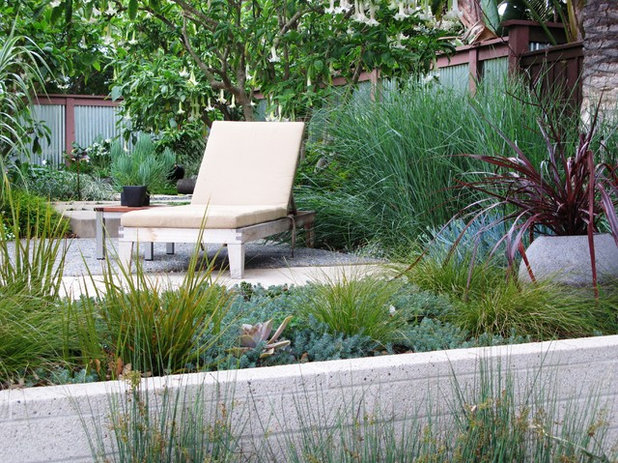
debora carl landscape design
Protect them from cold. Although some succulents will cope with cold temperatures if their soil and leaves are kept dry, most do best if they’re sheltered from frost. Planting against a north-facing wall is a good option in cooler regions. If the succulents are in containers, move them under the eaves of the house, a tree or onto the veranda if frosts are likely in your area. Stonecrops (
Sedum)
and houseleeks (
Sempervivum) are some of the least frost-tender succulents, while some yucca, echeveria and
Haworthia will tolerate light frosts.
10 Cold-Hardy Succulents for Cool-Season Interest
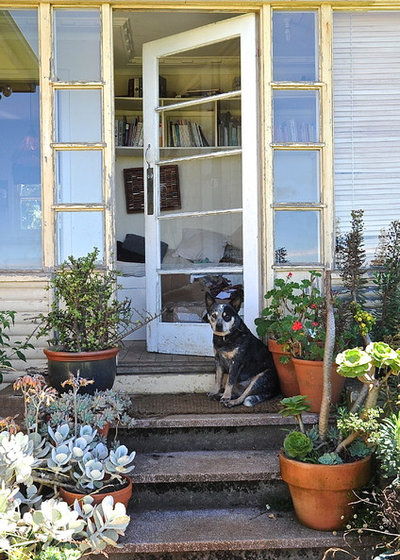
Luci.D Interiors
Keep out of the rain. Prolonged exposure to rain during cold winter months is anathema to most succulents. If their leaves are allowed to take up too much moisture, succulents become more vulnerable to frost damage. And the leaves of some low-growing species such as
Echeveria are liable to rot in very rainy weather.
Choose a planting spot under the eaves or close to a wall, or erect a temporary cover for winter protection. Super porous soil mixes will also help succulents survive in rainy regions.
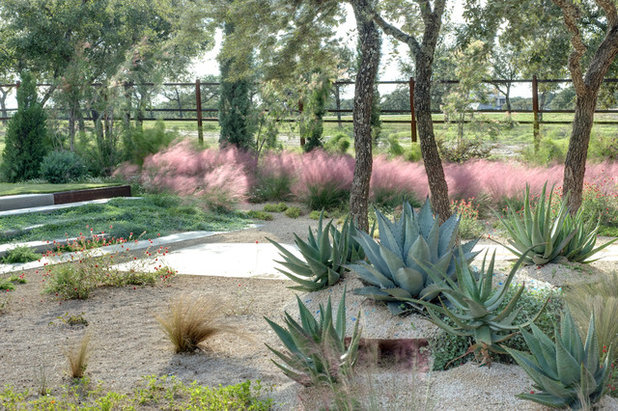
D-CRAIN Design and Construction
Get the soil right. Very free-draining, aerated soil is key to growing succulents well, both in the ground and in containers. If your soil is heavy clay, you’re better off growing succulents in pots.
Numerous commercial potting mixes for succulents are available now, or you can make your own by mixing a light potting mix with coarse sand, crushed pumice, gravel or perlite (four parts potting mix to one part sand, for example). A gravel mulch will also help prevent rotting in the stem of the plant. You can plant succulents into garden beds, provided the soil is well drained and doesn’t become too cold in winter.
Bonus tip: Adding sand or gravel to the soil will help drainage, and mounding plants above soil level is also a good idea. Don’t forget that north-facing, sloping sites are ideal for succulents.
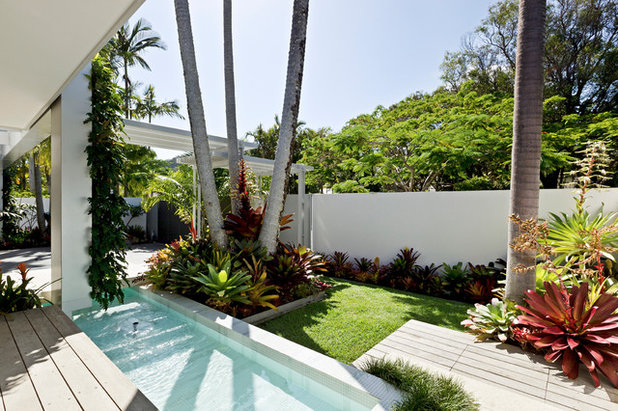
4blue
Water carefully. Succulents are xerophytes, which means they have adapted naturally to very little rainfall by storing water in their stems and leaves. However, they still do need to be watered, especially if they’re growing in pots. Check that the soil is reasonably dry before watering, as waterlogged soil is fatal to succulents. Soak well as you would other plants, but do it less often and always check for dryness beforehand.
Bonus tip: If the leaves look wrinkled, it’s likely your succulent is too dry.
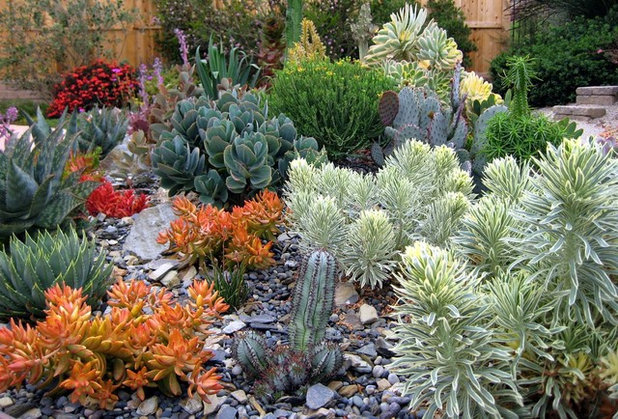
Gardens by Gabriel, Inc.
Feed sparingly. Some gardeners never feed succulents, but the occasional feed can improve their growth and looks considerably. With potted succulents especially, rain will leach out the nutrients in container mixes, and these need to be replaced.
Use a cactus and succulent fertilizer — or a quarter to half the recommended amount of an all-purpose fertilizer — three to four times a year, but not during the succulent’s winter dormancy.
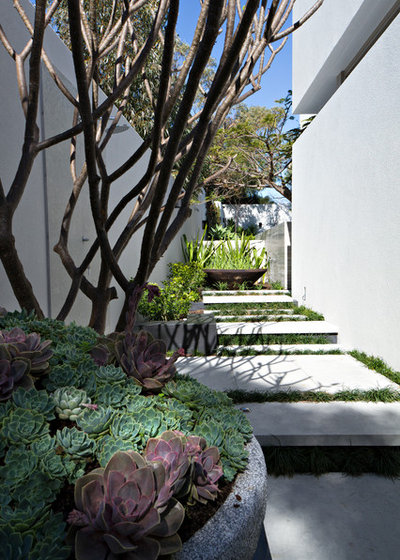
Tim Davies Landscaping
Monitor light levels. Bright light is essential for succulents to maintain a good shape indoors or out. If conditions are too shaded, the plant can become stretched with lanky growth. But not all succulents do well in hot, sunny conditions. Some do better if they receive only a few hours of morning sun in high summer, particularly in warmer areas.
Letting them become too hot and parched can have a detrimental effect on leaf color and shape. In hot, north-facing gardens, it’s a good idea to protect succulents with shade cloth or, if planted in pots, by moving them under a tree.
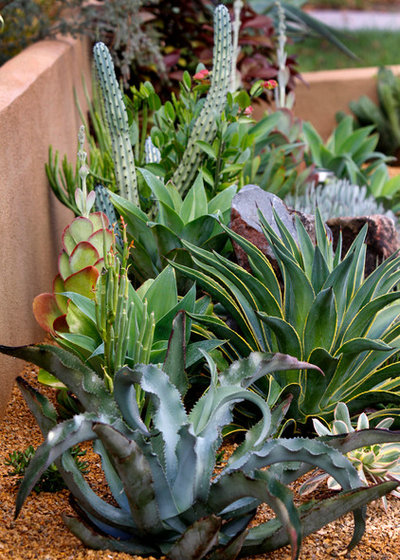
Singing Gardens
Keep an eye out for pests. Succulents may be tough but they’re not immune to pests. If soil conditions are good and the plants are well fed and watered, this shouldn’t be a problem too often.
Aphids can infest flowers and new growth, while mealy bugs will often set up shop in between leaves. In rainy weather, powdery mildew can also attack succulents, and in very warm weather ants like to invade potted plants. Although these pests and diseases may not kill your succulents, infestations need to be controlled as you would with any plant. Try organic sprays such as neem oil on aphids and mealy bugs.
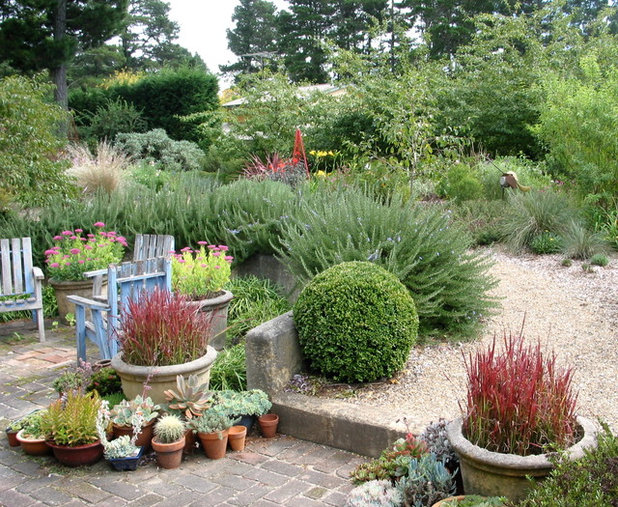
Arthur Lathouris Garden Designer
Propagate new plants. Most plants look better in large groups, and succulents are no exception. Propagating most succulents is quite easy. Some will produce “pups” around their base, like these echeveria, many houseleeks and aloes do. Others, such as
Gasteria and widow’s-thrill (
Kalanchoe), will grow new plants from leaves and stems. Use a coarse medium such as pumice when propagating leaf or stem cuttings.
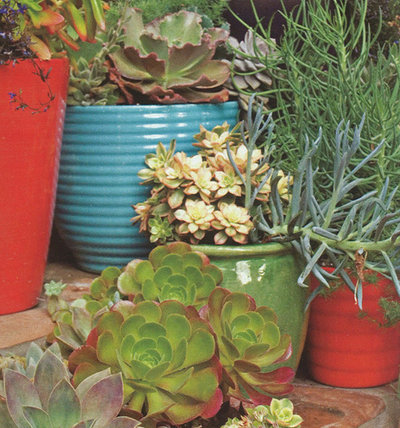
Sandy Koepke
Plant in containers. Succulents are ideal container specimens, many of them happy to grow in the same pot for years. Some succulent species will tolerate less light than others, so if you choose the right species, you can grow succulents indoors in pots. Getting the potting mix right (see above) is crucial, and you need to check drainage holes regularly to avoid wet soil rotting plants.
3 Steps to Creating Quick, Easy and Colorful Succulent Containers
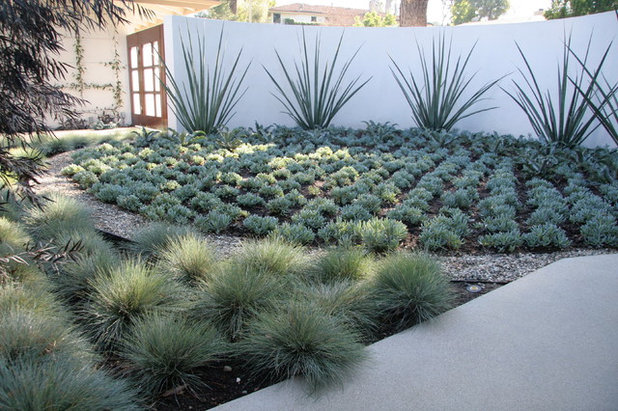
ecocentrix landscape architecture
Group with like-minded plants. The sculptural form of succulents can make a wonderful contrast with grasses and perennials. Always choose plants that tolerate the same free-draining, dry conditions, as this makes maintenance easier and works better aesthetically. Combining larger succulents such as agave
and yucca
with ground covers like stonecrops and echeveria
is also very effective.
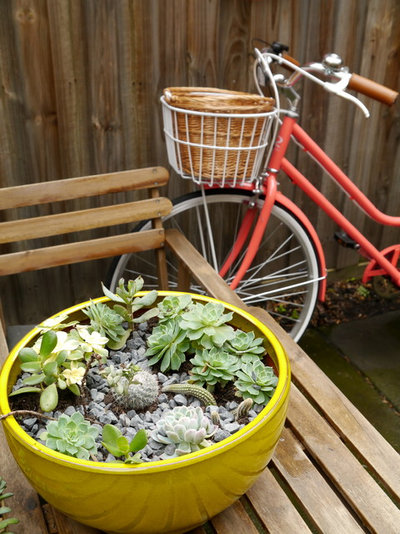
The Room Illuminated
Tell us: Do you grow succulents? Share your tips with us in the Comments.





